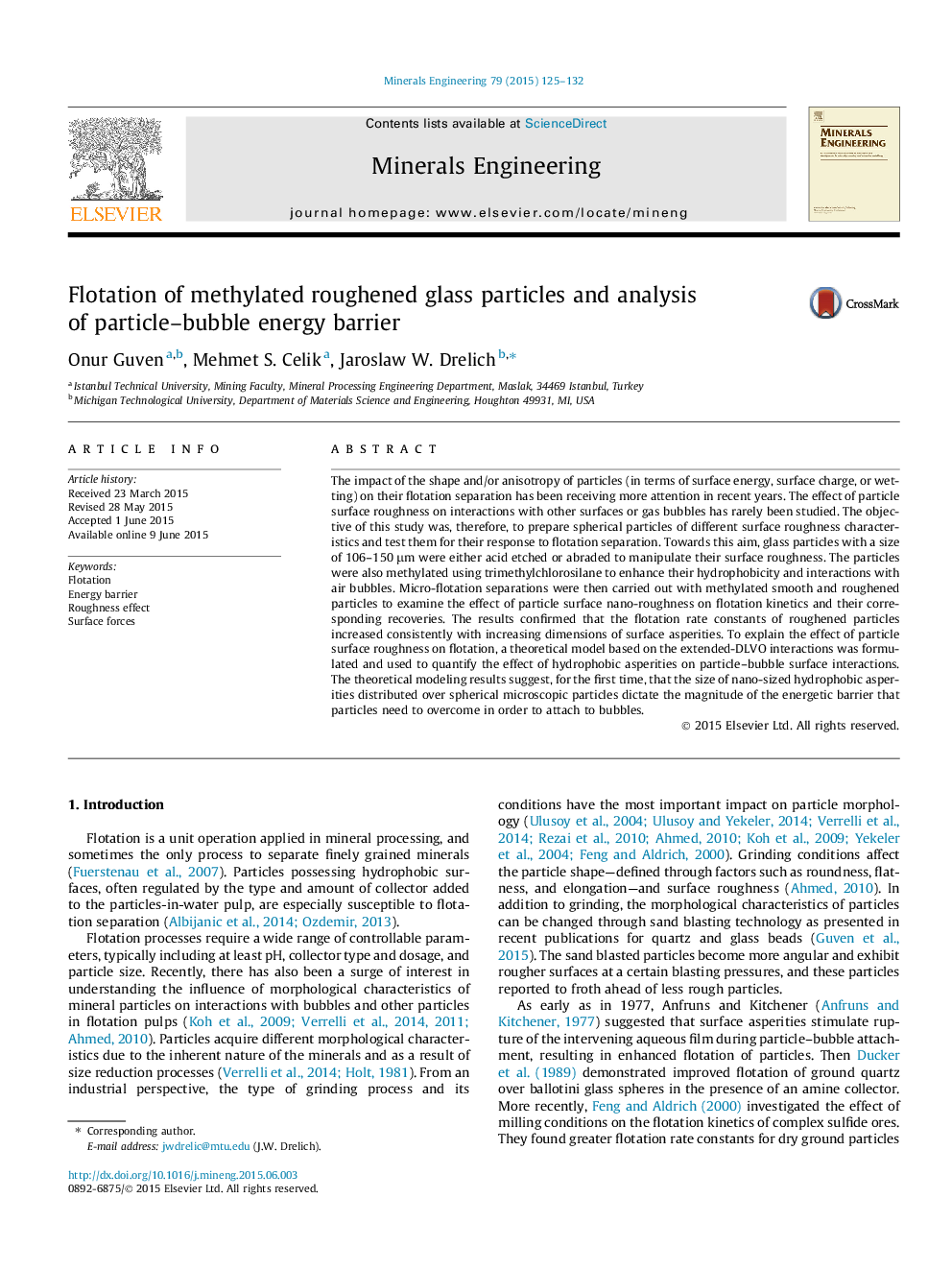| کد مقاله | کد نشریه | سال انتشار | مقاله انگلیسی | نسخه تمام متن |
|---|---|---|---|---|
| 232942 | 465314 | 2015 | 8 صفحه PDF | دانلود رایگان |
• Surface nano-roughness of methylated glass particles enhance particle flotation.
• Novel extended-DLVO model was developed for particles decorated with nano-asperities.
• Hydrophobic nano-asperities reduce the particle–surface energy barrier.
The impact of the shape and/or anisotropy of particles (in terms of surface energy, surface charge, or wetting) on their flotation separation has been receiving more attention in recent years. The effect of particle surface roughness on interactions with other surfaces or gas bubbles has rarely been studied. The objective of this study was, therefore, to prepare spherical particles of different surface roughness characteristics and test them for their response to flotation separation. Towards this aim, glass particles with a size of 106–150 μm were either acid etched or abraded to manipulate their surface roughness. The particles were also methylated using trimethylchlorosilane to enhance their hydrophobicity and interactions with air bubbles. Micro-flotation separations were then carried out with methylated smooth and roughened particles to examine the effect of particle surface nano-roughness on flotation kinetics and their corresponding recoveries. The results confirmed that the flotation rate constants of roughened particles increased consistently with increasing dimensions of surface asperities. To explain the effect of particle surface roughness on flotation, a theoretical model based on the extended-DLVO interactions was formulated and used to quantify the effect of hydrophobic asperities on particle–bubble surface interactions. The theoretical modeling results suggest, for the first time, that the size of nano-sized hydrophobic asperities distributed over spherical microscopic particles dictate the magnitude of the energetic barrier that particles need to overcome in order to attach to bubbles.
Figure optionsDownload as PowerPoint slide
Journal: Minerals Engineering - Volume 79, August 2015, Pages 125–132
